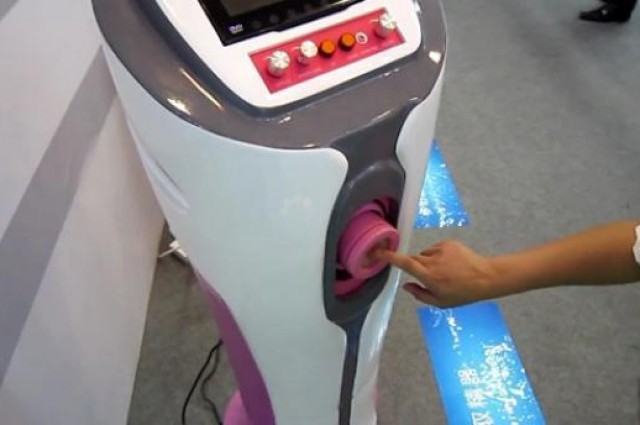

In one study, fine needle aspiration with mapping (defined as more than four fine needle aspiration sites per testis following systematic planned aspiration site mapping) yielded sperm in 33% of patients with NOA ( 10). This technique carries the risk of injuring small vessels causing a hematoma and often fails to recover sperm in patients with NOA ( 9).

#Sperm extractor skin
TESA is a percutaneous procedure where a needle is advanced through the skin into the testicle while applying suction and the aspirated fluid is then checked for sperm. Non-selective, open biopsies have been used however, multiple non-selective testicular biopsies may risk damage to the testes ( 8). Multiple methods have been developed to extract testicular sperm in NOA. The challenge with sperm retrieval in NOA is that testicular sperm are often non-motile and extremely rare ( 7). Previously, severe cases of NOA required use of donor sperm to result in successful pregnancy ( 7). This has offered an opportunity for men with NOA to become biological fathers ( 3, 6). The introduction of intra-cytoplasmic sperm injection (ICSI) has allowed the use of even a single extracted sperm to fertilize an oocyte, which can lead to clinical pregnancy. Sperm extraction from patients with NOA is more difficult and requires additional steps before fertilization can occur using artificial reproductive technologies (ART). OA is characterized by adequate testicular sperm production which may be successfully extracted through testicular sperm aspiration (TESA) or testicular sperm extraction (TESE) ( 5). In comparison, OA is caused by ductal system obstruction leading to male factor infertility. Up to 30–60% of males with NOA can have surgical sperm identified on microdissection testicular sperm extraction (microTESE) ( 3, 4). NOA is the most severe form of male-factor infertility and is characterized by little or no sperm production in the seminiferous tubules. Azoospermia may be due to obstruction of the male reproductive tract or inadequate sperm production. Further management recommendations are made based on these subjective and objective parameters of the semen analysis.Īzoospermia is characterized by the lack of sperm in the ejaculate. A semen sample can also be measured or quantified using parameters such as semen volume (mL), vitality (live spermatozoa), sperm morphology, sperm concentration (10 6 per mL), and absolute sperm count ( 2). Semen analysis may suggest poor sperm motility, abnormal morphology, ejaculatory tract abnormality, or inadequate sperm production. Semen analysis is the cornerstone of the male infertility workup and can provide valuable diagnostic information. Accepted for publication Aug 19, 2019.Īpproximately 15% of couples fail to conceive after one year, and male factor infertility is implicated in nearly half of these cases ( 1). Keywords: Microfluidics sperm separation azoospermia/therapy male microdissection/methods sperm injections intracytoplasmic/methods sperm retrieval Policy of Dealing with Allegations of Research Misconduct.Policy of Screening for Plagiarism Process.Surgical sperm retrieval: Techniques and their indications. Sperm preparation before freezing improves sperm motility and reduces apoptosis in post-freezing-thawing sperm compared with post-thawing sperm preparation. Petyim S, Neungton C, Thanaboonyawat I, Laokirkkiat P, Choavaratana R. Brief communication: assessment and validation of nonspermicidal condoms as specimen collection sheaths for semen analysis and assisted conception. Tomlinson MJ, Naeem A, Hopkisson JF, Campbell B. Spermiotoxicity of commercial condoms made from polyurethane, polyisoprene and latex, using domestic ruminants as an experimental animal model. The effects of vaginal lubricants on sperm function: an in vitro analysis. Mowat A, Newton C, Boothroyd C, Demmers K, Fleming S. Limitations of semen analysis as a test of male fertility and anticipated needs from newer tests. Psychological and social aspects of infertility in men: an overview of the evidence and implications for psychologically informed clinical care and future research.


 0 kommentar(er)
0 kommentar(er)
